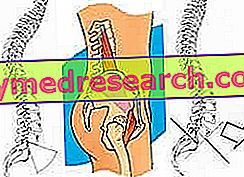Definition
The adnexal torsion is a gynecological emergency caused by the partial or complete rotation of the ovarian peduncle on its axis. This event can interrupt the normal arterial flow and venous drainage (therefore the blood that arrives and departs from the ovary), causing ischemia and necrosis. Usually, the disease affects women of childbearing age.
Adnexal torsion may involve the ovary and / or the corresponding fallopian tube.
Possible risk factors include ovulation induction in preparation for assisted fertilization, pregnancy (especially during the initial phases) and ovary size increase beyond 4-6 cm (often associated with the presence of ovarian masses of neoplastic nature).
Favorable conditions can also be the presence of an ovarian cyst (especially if solid), hydrosalpinge, tubal ligation and previous surgical operations that increase the mobility of the annexes.
Most common symptoms and signs *
- Acute abdomen
- Colic
- Diarrhea
- Abdominal pain
- Abdominal pain on palpation
- Ovarian pain
- Pelvic pain
- Temperature
- Sore legs
- infertility
- Backache
- Nausea
- Painful ovulation
- Constipation
- Tachycardia
- He retched
Further indications
In most cases, the adnexal torsion of the ovary and its associated tube appears unilaterally, while it is rare that it is bilateral and synchronous.
The adnexal torsion causes an intense, sudden and unilateral pelvic pain, which can last several hours. At the same time, nausea and vomiting and, sometimes, diarrhea or constipation (symptoms that can confuse the diagnosis) may also occur. The patient may experience tension in the lower abdomen and fever and tachycardia may appear.
Frequently, pain associated with adnexal torsion arises or ceases after abrupt body movements. Furthermore, it can radiate posteriorly to the back, laterally and to the thigh.
The presence of recurrent ovulatory pains may be a sign of spontaneous torsion-resolved episodes due to increased secretions and tubal motility. In these cases, the pain is generally colonic and intermittent. Adnexal torsion can cause peritonitis and delayed intervention can lead to irreversible damage to the tube and / or ovary.
The diagnosis is usually confirmed by the transvaginal echocolordoppler. Often, there are also signs of peritoneal irritation, tenderness to cervical mobilization and the presence of an unilateral local adnexal mass.
Therapy may be based on a laparoscopic or laparotomic conservative detortion procedure. Salpingo-oophorectomy is necessary in the presence of extensively ischemic or necrotic tissue.



